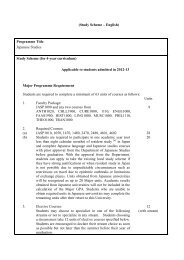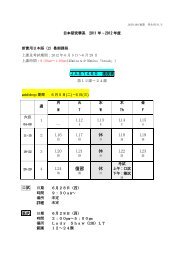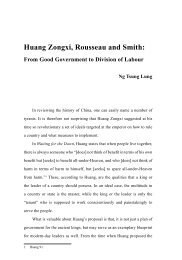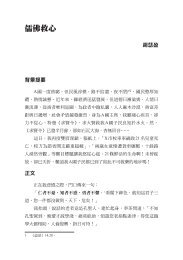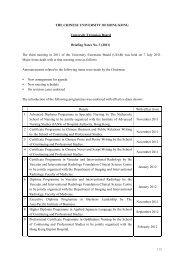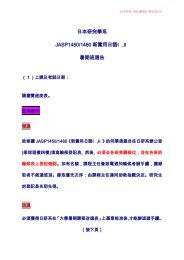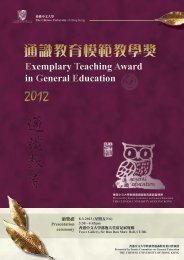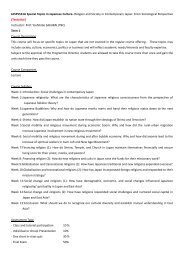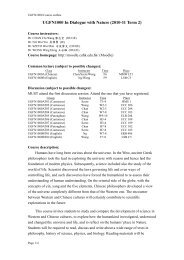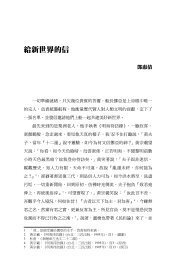ä¸è¼å ¨æ¸ - The Chinese University of Hong Kong
ä¸è¼å ¨æ¸ - The Chinese University of Hong Kong
ä¸è¼å ¨æ¸ - The Chinese University of Hong Kong
Create successful ePaper yourself
Turn your PDF publications into a flip-book with our unique Google optimized e-Paper software.
Susan Gano-Phillips, Affective Learning in General Education 25<br />
Disagree) and data can be quickly and quantitatively summarized to examine<br />
possible attitudinal changes over time. Items on such questionnaires can ask<br />
for students’ responses to specific and rather narrow attitudes or to broader<br />
statements <strong>of</strong> values. Additional resources for developing and implementing<br />
questionnaires are <strong>of</strong>ten available through assessment <strong>of</strong>fices on campus,<br />
through websites that focus on affective learning outcomes (e.g., AAC&U’s<br />
Core Commitments project; see Association <strong>of</strong> American Colleges and<br />
Universities, 2004), or through consultations with those responsible for OBA<br />
implementation.<br />
To decrease the likelihood <strong>of</strong> students providing inaccurate reports <strong>of</strong><br />
their attitudes due to expected social behaviors (i.e., answering in ways the<br />
faculty member has indicated is more desirable), these types <strong>of</strong> questionnaires<br />
should not be graded and should, ideally, be anonymous. With sophisticated<br />
s<strong>of</strong>tware available in many online course platforms like Blackboard or<br />
WebCT, students can be given “credit” for completing a survey questionnaire<br />
while having their responses remain anonymous. <strong>The</strong> anonymous feedback<br />
is still sufficient for faculty to evaluate whether the instruction is changing<br />
attitudes <strong>of</strong> the class in a desired direction, although individual assessment <strong>of</strong><br />
students’ changes in attitudes are not identifiable.<br />
Surveys <strong>of</strong> peers, instructors, supervisors, and employers. A final major<br />
method <strong>of</strong> assessing affective ILOs uses data from sources other than the<br />
individual students themselves. Faculty can, and regularly do, rate students’<br />
behaviors, but peers, internship supervisors, co-op employers, and even postgraduation<br />
employers are alternative sources <strong>of</strong> behavior ratings that may tell<br />
instructors about students’ affective learning. <strong>The</strong> nature <strong>of</strong> the instruments<br />
completed by others range from checklists (presence/absence <strong>of</strong> a performance),<br />
to rating scales (levels <strong>of</strong> performance), to the use <strong>of</strong> holistic scoring rubrics



